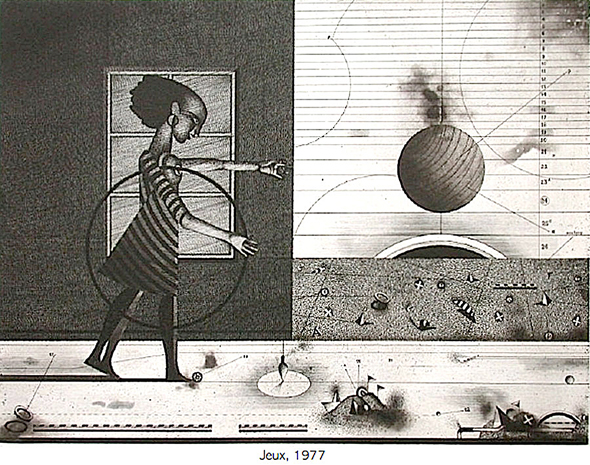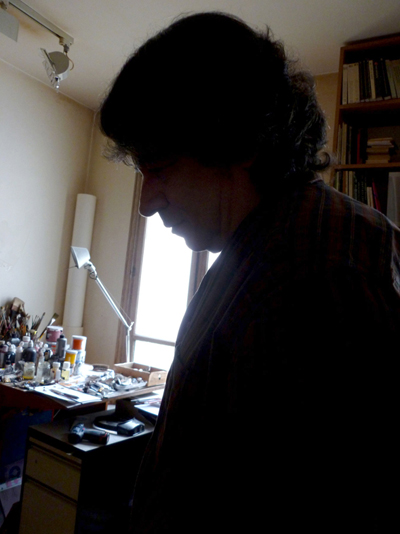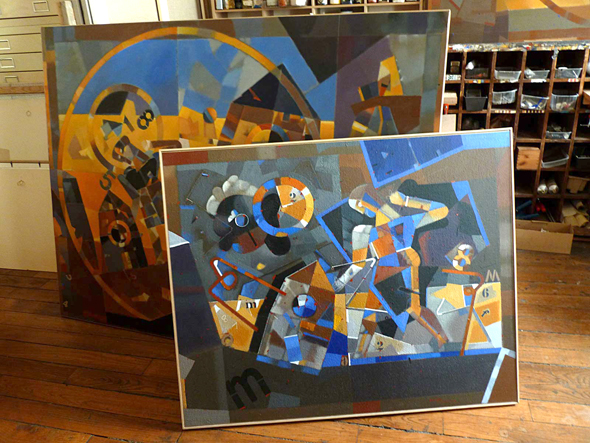Artist and writer Barbara Confino’s new series, Walkabout: The City As Image, explores urban life as a visual experience. Functioning as both cameraman and editor, the walker sees the physical and human environment as if it were a film in the making with its connections, contradictions, collage-like juxtapositions, and unexpected harmonies
Delta Airlines does not exist. They have imaginary planes that are always late. When at last they arrive you are told you have an imaginary seat. It seems the only thing that is not a figment of my imagination is the money I paid for the ticket. And when I want to change that ticket in Paris, I discover they have imaginary offices as well. `
After enlisting the aide of a helpful travel agent, I discover all their phone numbers are fakes, too. Nevertheless I have no choice but to chase down the phony addresses listed alongside them, which has me racing around half of Paris. Eventually, hidden behind an Air France counter and manned by a clerk who hasn’t a clue how to process my request, I discover them. But before that, I discover the painter: Assadour.
In the true spirit of the Walkabout, I find him par hasard, while searching for something else. On the rue du Faubourg Saint-Honoré, one of the most famous streets in Paris, in the window of a rare book dealer, his marvelous collages and prints and paintings ambush me. Immediately abandoning my search for the phantom airline, I go in search of the artist. Assadour.
An Armenian artist raised in Lebanon, educated in Italy, working in France, his name is so mellifluous, it clearly needs no other. Assadour.
Some days later I meet him in his studio. He spends hours giving me a grand tour of his work, during which I see that his is an art of pure mind. Definitions, boundaries, tensions and chemical bonds, are rendered with surgical precision in a somber atmosphere full of playful geometry. Especially in his eaux-fortes, a medium of which he is the Grand Master, he is a metaphysician at play. Game pieces move mysteriously on chessboards whose rules are unknown to us. Here and there the head of Athena, the arm of Isis, a chemical sign or a tailor’s blueprint, a little man with a striped arm, children’s blocks, cabalistic letters, grids, zig zags and secret towers – all of them figures on a page in his alchemist’s notebook.
Though his works are relatively small there is something about them implicitly large. We can easily imagine them filling an entire wall or even a city block. Their complexity almost demands room to breathe, to stretch out and expand. Perhaps someday they will have it. For now their small scale makes them feel compressed to bursting point, their sharply delineated complexity the work of a clockmaker-magician. This compression bespeaks not a horror of vacuum as much as a horror of breaking apart, of diffusion and eroding boundaries. A defiant Non in the face of entropy. Clearly he detests vagueness of any kind and approaches space like a carver, dividing, delineating, engraving it.
Well known as a graphic artist who has worked with some of the best writers and poets in Europe, Assadour is somewhat less well established as a painter, though his work has a steady following. The larger paintings are often dominated by a figure, frequently female, that rotates like the hands of a clock in relation to formal elements surrounding it. Many of his shapes resemble gears whose complicated rhythms are restrained and electronic rather than orchestral and sensuous. Stockhausen not Mahler would be an apt comparison.
Careful touches of red and patches of black enhance his muted palate of ochres and blue-greys, reinforcing this feeling of control and restraint fighting against chaos – which, in some of his more intricate compositions, threatens to overwhelm the painting. After all, how many shapes can he juggle, how many forms can he manage without the whole thing falling apart? Very many it seems. Very many indeed.
Now there is talk of him moving into sculpture, that his architectures of form will push through to the third dimension to assert their philosophy of containment in deep space. And that, it seems to me, would be the perfect extension of his art.
___________________________________________________________________________________
Text and photos in Assdour’s studio by Barbara Confino in New York; Wednesday, October 03, 2012
Barbara Confino is an artist and writer based in New York City. Her work has been featured at the Brooklyn Museum and is housed in such collections as the British Museum Library, the Bibliotheque Nationale de France and the Staatsbibliothek of Berlin. She is Associate Editor of the New York Photo Review, where she reviews the current photography scene. For two years she was Artist-In-Residence at New York’s Polytechnic University and she teaches at CUNY’s New York City College of Technology. Her installation, the Genetic Wars can be seen at www.thegeneticwars.com. Further writings of Barbara Confino can be found at perceptionsinpassing.com





























